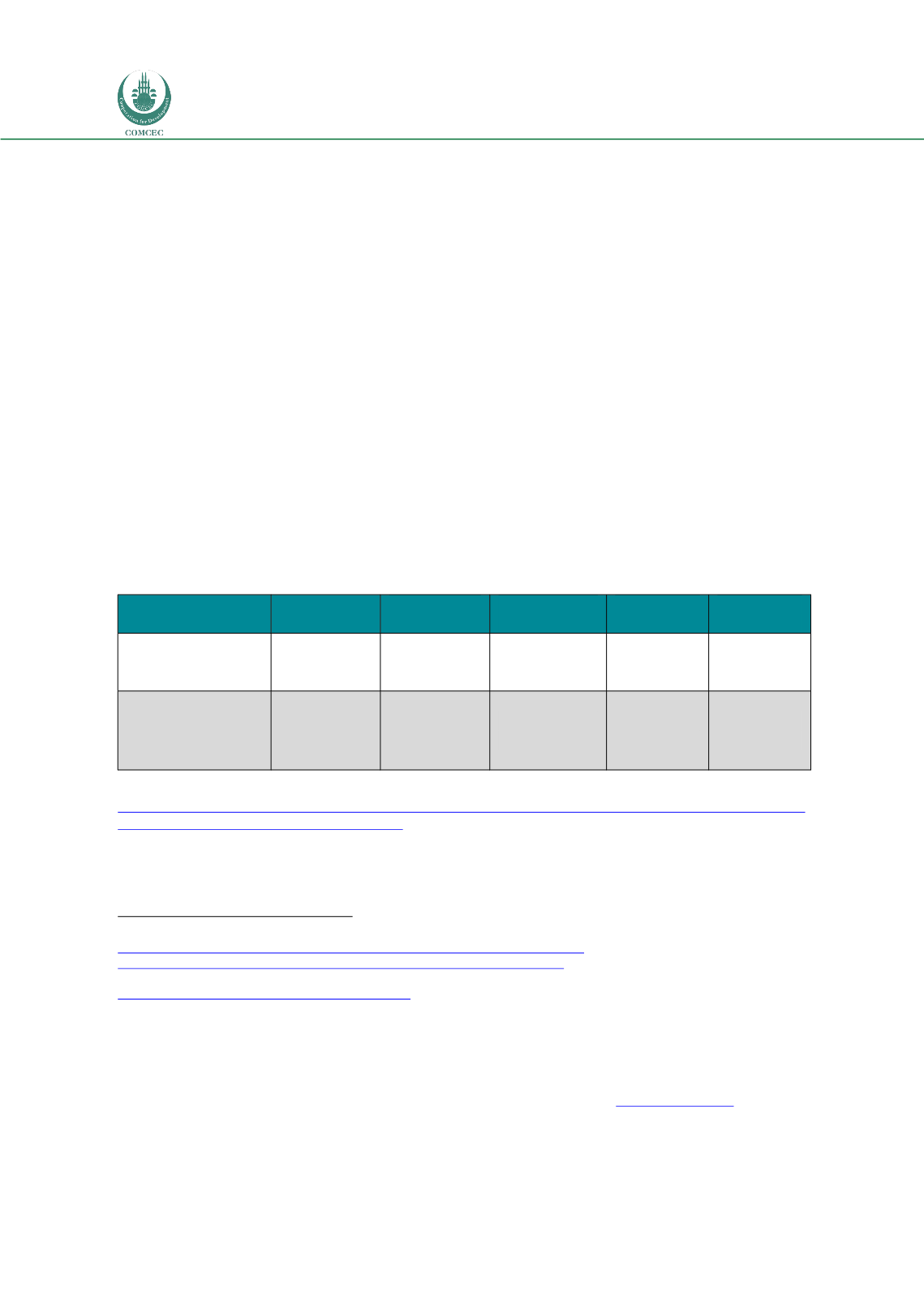

Forced Migration in the OIC Member Countries:
Policy Framework Adopted by Host Countries
160
requirements.
157
If protection beneficiaries are not self-sufficient after two years, they are
eligible to receive mainstream social assistance.
Asylum applicants, however, are not allowed access to the social assistance system,
158
and are
instead provided with a lower benefit payment that is administered by the Migration Agency.
Asylum applicants receive free housing and modest cash payments (prorated based on family
status and type of housing, as shown in Table 14). Benefits payments can be reduced for
applicants with significant personal assets or who are in work, though this is rare as few
applicants arrive with many assets.
159
Individuals who do not cooperate with efforts by
asylum authorities to prove their identity can also have their benefits reduced.
The relatively low level of financial assistance provided has come under criticism from non-
governmental organizations and others working with asylum seekers.
160
Benefits for asylum
seekers living in private housing are just over half the level of social assistance provided to
Swedish residents.
161
Moreover, the Migration Agency has not increased payments for asylum
applicants since 1994.
162
Other supplemental assistance is available through specific grants to
cover needs for particular items, such as health equipment, items for infants, or winter
clothing.
163
Table 14: Maximum benefits paid to asylum applicants per day, by family status and type of
housing provided
Type of housing
Single adult
Co-habiting
adult
Child
(0-3
years)
Child (4-10
years)
Child (11-
17 years)
Managed reception
facility
(where
food is provided)
SEK 24
(USD 2.80)
SEK 19
(USD 2.20)
SEK 12
(USD 1.40)
SEK 12
(USD 1.40)
SEK 12
(USD 1.40)
Apartment
or
private
accommodation
SEK 71
(USD 8.30)
SEK 61
(USD 7.10)
SEK 37
(USD 4.30)
SEK 43
(USD 5.00)
SEK 50
(USD 5.80)
Source: Migrationsverket, “Financial support for asylum seekers,” updated June 3, 2016,
http://www.migrationsverket.se/English/Private-individuals/Protection-and-asylum-in-Sweden/While-you-are- waiting-for-a-decision/Financial-Support.html .Notes: The benefits paid per child to residents of managed facilities is reduced by half for each additional child
after the second child.
157
Försäkringskassan, “Faktablad: Ertablerings-ersäattning,” updated January 25, 2016,
https://www.forsakringskassan.se/wps/wcm/connect/65cfd0e0-89d3-4589-bf08-7be0f0a942ef/4143_Etableringsersattning_for_ny+i_Sverige.pdf?MOD=AJPERES
158
Law on the Reception of Asylum Seekers and Others
, Swedish Law 1994:137,
Rättsnätet (
March 30, 1994), Chapter 1(3).
http://www.notisum.se/rnp/sls/lag/19940137.htm159
Interview with Marten Martensson, Operations Specialist, Reception Unit, Region South, Migrationsverket, April 15, 2016
160
George
Joseph,
Country
Report:
Sweden
(Brussels:
Asylum
Information
Database,
2015),
http://www.refworld.org/pdfid/569c963b4.pdf;Interview with Samarie Löfvendahl, Associate Legal Officer and Gisela
Thater, Senior Legal Officer, UNHCR, April 11, 2016
161
For a single adult, asylum seekers’ benefits amount to approximately SEK 2,130 (approximately USD 260) per month,
while social payments to residents are SEK 3,880 (approximately USD 480) per month. Joseph,
Country Report: Sweden
.
Currency conversions calculated using the XE Currency Converter, accessed June 7, 2016
, http://www.xe.com/ .162
Interview with Samarie Löfvendahl, Associate Legal Officer and Gisela Thater, Senior Legal Officer, UNHCR, April 11,
2016
163
Joseph,
Country Report: Sweden
.
















